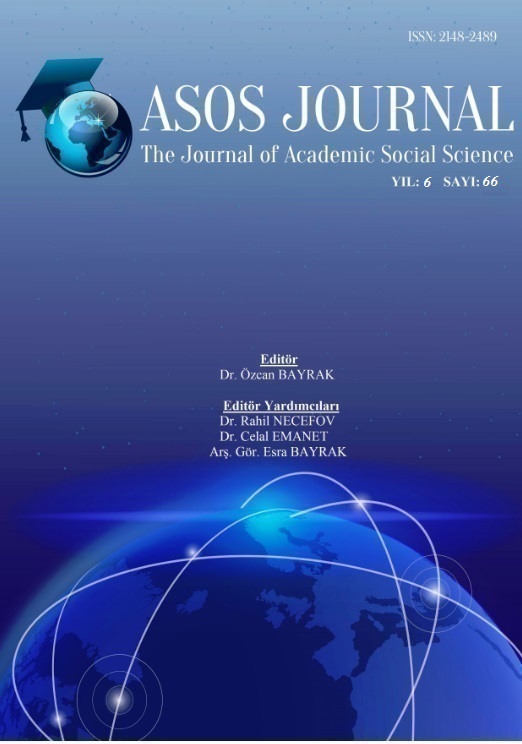Author :
Abstract
Sosyal medya kullanımı yavaş yavaş iletişim dünyasını değiştirmiş ve bilginin çevrimiçi olarak daha geniş kitlelere ulaşmasına, küresel diyalogların oluşmasına katkıda bulunmuştur. Sosyal medyanın popülerliğinin artması ile tüketicilerin bu platformda genellikle deneyim odaklı paylaşım yaptıkları görülmüştür. Bu durum, lüks moda piyasalarının da potansiyel müşterilerini belirlerken göz önünde bulundurduğu bir olgu haline gelmiştir. Çünkü yapılan araştırmalarda tüketicilerin genelde lüks markaları paylaşma eğilimi içerisinde olduğu gözlemlenmiştir. Ayrıca bir markanın pazarlama iletişim süreci marka itibarı açısından da önem arz etmektedir. Bu araştırmanın amacı, Y kuşağının lüks moda markalarına yönelik algılarını ve beklentilerini, sosyal medya bağlamında keşfetmektir. Araştırmaya yön veren en önemli soru ise: “Genç tüketiciler, sosyal medyada lüks moda markaları nasıl algılıyor?” olmuştur.
Keywords
Abstract
The use of social media had changed the communication world and the knowledge as in line arrived to masses and contributed to global communication. The increase in the popularityof social media the consumers share their experiences in this platform. This situation is valued by luxury fashion brands and they defined their potential customers according to it. In researches findings consumers generally share luxury brands. In addition, the marketing communication process of a brand is also important in terms of brand reputation. The aim of this research the perceptions and expectations of Y generation towards luxury fashion brands at that media. The most important question which directs this research is “How young consumers perceives luxury fashion brands at social media?”
Keywords
- Agichtein, Eugene; Castillo, Carlos; Donato, Debora; Gionis, Aristides; Mishne, Gilad, (2008), Finding High-Quality Content in Social Media. Stanford, pp. 183-194, ACM New York.
- Allsopp, Jamie, 2005, ‘Premium Pricing: Understanding The Value Of Premium’, Journal Of Revenue And Pricing Management 4, 185–194.
- Altunışık, R.; Coşkun, R; Yıldırım, E; Bayraktaroğlu, S, (2001), Sosyal Bilimlerde Araştırma Yöntemleri, Sakarya Kitabevi, Adapazarı.
- Barutçu, Süleyman; Tomaş, Melda, (2013), Sürdürülebilir Sosyal Medya Pazarlaması ve Sosyal Medya Pazarlaması Etkinliğinin Ölçümü, Journal of Internet Application and Managament, 4(1): 5-24.
- Bastien, V.; Kapferer, J.-N., 2012, Luxe Oblige. 2nd ed. Paris: Groupe Eyrolles.
- Bulunmaz, Barış, (2011), “Otomotiv Sektöründe Sosyal Medyanın Kullanımı Ve Fiat Örneği”, Global Media Journal, Cilt 2, Sayı 3, http://globalmediajournaltr.yeditepe.edu.tr/guz2011sayisi.html
- Catry, Bernard, (2003), “The Great Pretenders: The Magic of Luxury Goods”, Business Stra- tegy Review, 14/3, 10-7.
- Cote, Mark; Pybus, Jennifer, (2007), “Learning to Immaterial Labour 2.0: MySpace and Social Networks”, ISSN 1473-2866, www.ephemeraweb.org, volume 7(1), s.88-106.
- Danziger, P., (2004), Why people buy things they don't need: understanding and predicting con- sumer behavior, Dearborn Trade Publishing, 1st ed. Chicago.
- Faw, Larissa, 2012, Meet The Millennial 1%: Young, Rich, And Redefining Luxury, http://www.forbes.com/sites/larissafaw/2012/10/02/meet-the-millennial-1-young-richand-redefining-luxury/
- Hoffman, D. L.; Novak, T. P., (1996), “Marketing in Hypermedia Computer Mediated Envi- ronments: Conceptual Foundations”, Journal of Marketing, Vol: 60, No:3, s:50–68
- Holtshausen, T., J. Styrdom, (2006), “Generation Y consumers: Behavioral Patterns of Selected South African Students”, The Business Review Cambridge, 5, 314– 318.
- Kapferer, J.N.; Bastien, V., (2009), The specificity of luxury management: Turning marketing upside down. Brand Management, 16(5/6), pp. 311-322.
- Miller, Karen W.; Mills, Michael K., (2012), “Contributing Clarity by Examining Brand Luxury in the Fashion Market”, Journal of Business Research, 65(10), pp. 1471-1479.
- Okonkwo, U. (2007) Luxury Fashion Branding: Trends, Tactics, Techniques, Palgrave Macmıl- lan
- Phau, I.; Prendergast, G., (2000), Consuming Luxury Brands: The Relevance of the Rarity Prin- ciple, Journal of Brand Management, 8 (2), 122–138.
- Rubinstein, H.; Griffiths, C., (2001), Branding Matters More On The Internet. Brand Manage- ment, 8(6), Pp. 394-404.
- Seyidoğlu, Halil, (1992), Ekonomik Terimler Sözlüğü, Gizem Yayınları, Ankara.
- Taylor, Susan Lee; Cosenza, Robert M., (2002) “Profiling Later Aged Female Teens: Mall Shopping Behavior and Clothing Choice”, Journal of Consumer Marketing, 19(5), 393– 408.
- Tığlı, M.; Aylanç Akyazgan, M., (2003)., “Özellikli (Lüks) Tüketim Ürünlerinde Enderlik Pren- sibi ve Bir Uygulama”, Kocaeli Üniversitesi Sosyal Bilimler Dergisi, Vol.1, ss.21-37.
- Tsai, Shu-Pei, (2005), “Impact of Personal Orientation on Luxury-Brand Purchase Value”. In- ternational Journal Of Market Research, 47(4), Pp. 427-452.
- Weinberg, Tamar, (2009), The New Community Rules: Marketing on the Social Web, O’reilly, California





